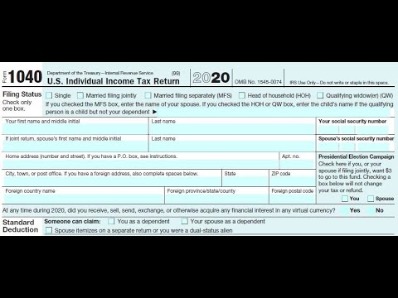
The inventory will be removed when the risk and reward transfer to the customer, and it is recorded in contrast with the cost of goods sold on the income statement. However, it is important to note that credit sales can often result in higher prices due to interest and fees. So, it is important to carefully consider whether this type of sale is the best option for your needs. Credit sale is a type of sale in which the buyer pays for the goods or services at a later date. This type of sale is often used when the buyer does not have the full amount of money needed to pay for the purchase upfront. In many cases, the buyer will be given a grace period to pay off the balance before interest starts accruing.
Adjusting Journal Entry Definition: Purpose, Types, and Example.
Posted: Wed, 13 Jul 2022 07:00:00 GMT [source]
You would also credit the Sales Revenue account for $1,000, reflecting the revenue earned from the sale of goods. As a general accounting term, “Sales” refers to the revenue generated by a business by selling products or services. This is the income generated by the business’s core business operations. Let’s say you have a beginning balance in your Inventory account of $4,000.
ABC Inc can take input credit of the same amount and claim a refund from the government. You have the following transactions the last few days of April. Remember that your debit and credit columns must equal one another. Your Accounts Receivable total should equal the sum of your Sales Tax Payable and Revenue accounts. FOB Destination means the ownership of the goods is transferred at the buyer’s dock.
At the end of the period, you count $1,500 of ending inventory. Your COGS Expense account is increased by debits and decreased by credits. Some people believe that the credit term of 2/10, net 30 is far too generous. Some sellers won’t offer terms such as 2/10, net 30 because of these high percentage equivalents. Other sellers are discouraged to find that some customers take the discount and ignore the obligation to pay within the stated discount period.
Notice that for this entry, the rules for recording journal entries have been followed. In the case of credit sales, the respective “debtor’s account” is debited, whereas “sales account” is credited with the equal amount. As previously mentioned, credit sales are sales where the customer is given an extended period to pay. There are several advantages and disadvantages for a company offering credit sales to customers. The inventory cost is $ 60,000 and it sold for $ 80,000 to the customer. Moreover, it is a credit sale, so the company has to record the accounts receivable as well.
A journal is the first place information is entered into the accounting system. A journal is often referred to as the book of original entry because it is the place the information originally enters into the system. A journal keeps a historical account of all recordable transactions with which the company has engaged.
This means the seller is responsible for transporting the goods to the customer’s dock, and will factor in the cost of shipping when it sets its price for the goods. FOB Shipping Point means the ownership of the goods is transferred to the buyer at the seller’s dock. This means that the buyer is responsible for transporting the goods from Quality Product’s shipping dock. Therefore, all shipping costs (as well as any damage that might be incurred during transit) are the responsibility of the buyer. Having Lio in your life would definitely make your life much easier and hassle-free.
How to Make Payroll Journal Entries: A Small Business Guide.
Posted: Wed, 18 May 2022 18:36:15 GMT [source]
As a smaller grocery store, Colfax does not offer the variety of products found in a larger supermarket or chain. Note that this example has only one debit account and one credit account, which is considered a simple entry. A compound entry is when there is more than one account listed under the debit and/or credit column of a journal entry (as seen in the following).
For example, the COGS for a baker would be the cost of ingredients, and labor if she has an assistant who helps produce items for sale. Overhead costs such as rent, utilities, or the cost of delivering a wedding cake (delivery van, gas, driver) would not be included in COGS. In accounting, when we purchase the goods on credit, there will be a liability that exists at the time of purchase. In this case, we need to make the journal entry for purchasing goods on credit in order to account for the liability that occurs as a result. Simply put, COGS accounting is recording journal entries for cost of goods sold in your books.
Inventory consists of finished products and merchandise awaiting sale, and also includes raw materials and work-in-process. Unsold inventory from the previous year is considered beginning inventory in the COGS formula. Purchases made throughout the year are added to the inventory to calculate COGS. At the end of the year, any unsold inventory is considered ending inventory, and this number is subtracted from the beginning inventory and purchases total to arrive at COGS.

The sales journal records all credit transactions involving the firm’s products. In the case of credit sales, the respective “debtor’s account” is debited, whereas the “sales account” is credited with an equal amount. In the journal entry, Accounts Receivable has a debit of $5,500. This is posted to the Accounts Receivable T-account on the debit side. This is posted to the Service Revenue T-account on the credit side.
Collect information ahead of time, such as your beginning inventory balance, purchased inventory costs, overhead costs (e.g., delivery fees), and ending inventory count. To create the sales journal entry, debit your Accounts Receivable account for $240 and credit your Revenue account for $240. As a refresher, debits and credits affect accounts in different ways. Assets and expenses are increased by debits and decreased by credits.
Many businesses rely on inventory to keep their operations running smoothly. This journal entry is made for the $5,000 of the accounts receivable collection that we have received on July 20. For example, on June 30, we have made $5,000 goods sold on credit to one of our customers. This $5,000 has the original cost of $3,000 in our inventory record. The data in your sales journal can give you valuable insights into your business’s performance.
Likewise, both total revenues on the income statement and total assets on the balance sheet increase by the same amount as a result. This journal entry will remove the amount of the accounts payable that we have recorded for purchasing goods on credit previously as we make the cash payment to the supplier. Likewise, this journal entry for settling previous credit purchases of the goods will decrease both total assets and total liabilities on the balance sheet by the same amount. A credit sales journal entry is used to record the revenue from a customer’s purchase on credit.
No matter what you are planning to do or what business you decide to run, Lio can be of big help to anyone and everyone. With the use of this application, you can make your daily tasks on track and keep tabs on all things. Credit card machines are synonymously referred to as ‘point of sale terminals/machines’. Consider the same example above – Company A selling goods to John on credit for $10,000, due on January 31, 2018.
Accounting and journal entry for credit sales include 2 accounts, debtor and sales. In case of a journal entry for cash sales, a cash account and sales account are used. On the other hand, if we use the available for sale securities periodic inventory system, we can just debit the accounts receivable and credit the sales revenue account. This journal entry will reduce the net sales revenue as we debit the cost of goods sold.